It’s Monday, October 31st, 2011….and here’s the Gouge!
First up on the last Gouge of October, it’s the “Coming Soon To A City, State And/Or Country Near You” segment, and an object lesson for the rest of us, courtesy of Steve Malanga, the WSJ and the irresponsible idiots….yes, idiots….running the city of Harrisburg, PA:
How Harrisburg Borrowed Itself Into Bankruptcy
Can the capital of Pennsylvania stiff creditors when a credible payment plan is available?
During an April 2009 debate among candidates vying to be mayor of Harrisburg, Pa., one aspirant suggested that the financially troubled city should sell some of its valuable historical artifacts and use the proceeds to finance a “Harrisburg Museum of Bad Ideas.” One compelling exhibit would be the city’s recent decision to file for bankruptcy protection.
Harrisburg, the capital of Pennsylvania, is drowning in debt. City officials have known for more than four years that they’d have to deal with the fiscal mess, but they punted. The state has engineered a bailout plan, but the city council rejected it. Instead it has asked creditors to forgo as much as $100 million of the debt. Essentially, the city council is engaged in a giant game of brinksmanship with the state and creditors, daring them to come up with something that’s less onerous than the current state plan, which involves asset sales and renegotiating union contracts.
“There’s no way [state] legislators are going to sit up there and let the capital city of this state go under. They would be the laughingstock of the country,” council member Gloria Martin-Roberts said earlier this year.
Under seven-term Mayor Stephen Reed, who governed from 1982 to 2010, Harrisburg had a long love affair with borrowed money, using it to spur projects of dubious value. The city invested millions of dollars in a stadium in the late 1980s to attract a minor league baseball team. When the Harrisburg Senators threatened to leave in 1995, the city bought the team with borrowed money. In 2009, even as the fiscal clouds darkened, it sank another $45 million, including $18 million in new debt, into upgrading the stadium. The team was attracting 2,488 fans per game.
Then there are those historical artifacts. Mr. Reed, once described by a local newspaper as a man who “never met a municipal bond he didn’t like,” wanted to borrow to open a network of museums. He spent some $39 million on a National Civil War Museum that opened in 2001. It has struggled for years to attract crowds. Undeterred, the mayor borrowed some $8 million to buy artifacts—including a Gatling gun, a Wells Fargo coach and a document signed by Wyatt Earp—for a proposed Wild West museum, though most of the purchases were made without the knowledge and consent of the city council. Plans for a Wild West museum and a National Sports Hall of Fame, financed by a $30 million bond offering, mercifully fell through.
The Harrisburg Authority, a city agency controlled by the mayor, floated much of the city’s debt, including millions on an ill-fated incinerator. Built in the 1970s, it has been plagued by breakdowns and operating losses. Many other municipal governments, including nearby Lancaster County’s, have turned their incinerators over to private-sector operators. The Harrisburg Authority spent the 1990s investing millions in a fruitless effort to make the plant efficient and profitable. But default loomed by 2003—when the city was forced to close the incinerator, now saddled with $100 million in debt, because it did not comply with federal clean-air standards.
Next up? A massive retrofit engineered by Barlow Projects Inc., a firm from Fort Collins, Colo. Harrisburg and Dauphin County, where the city is located, agreed to guarantee $125 million in new borrowing that was supposed to be paid back by revenues from the reopened plant. The city’s debt load grew to $441 million, about $9,000 per resident.
The project fell behind and Barlow filed for bankruptcy in 2007 after the city fired it before work on the plant was completed. Harrisburg has missed payments on the incinerator debt, and it avoided default on its general obligation bonds in September 2010 only because the state stepped in with aid.
A worried state government enlisted a financial consultant to come up with a bailout plan. Unveiled in June, it involves selling the rights to the city’s parking garage revenues to raise money, privatizing commercial sanitation services to cut costs, gaining concessions from city workers on pay and benefits, and raising taxes.
The city council rejected the state plan in July. Mayor Linda Thompson proposed a similar plan. It was voted down in August. Earlier this month the city council essentially threw Harrisburg on the mercy of the federal bankruptcy court, where members hope for a better deal.
The state has already challenged the bankruptcy petition. Gov. Tom Corbett, calling the Chapter 9 filing “illegal,” is preparing to take over management of the city. But the city council remains defiant. Its attorney, Mark Schwartz, said that Mr. Corbett “can declare it Flag Day or Pay Investment Banks Day, it doesn’t matter. He has to justify [a takeover] before the bankruptcy court.”
Harrisburg’s creditors, including municipal bond insurer Assured Guaranty Municipal Corp., have also sued the city. The municipal finance industry will be watching what happens with keen interest—because Assured Guaranty had received city and county debt guarantees. The county has lived up to its agreement and made payments to bondholders, but Harrisburg has not.
The Harrisburg case raises fundamental questions about the way cities and states increasingly use debt to finance speculative development that private investors or lenders won’t touch. From minor league stadiums to arenas, museums, downtown redevelopment and waste plants with unproven technologies, billions have been spent on schemes of questionable value. Some projects are backed by unrealistic economic projections, which leave taxpayers on the hook for bond payments or operating subsidies. These deals are one reason why state and local debt outstanding has ballooned from $1.3 trillion to $2.5 trillion in the last decade, according to the U.S. Federal Reserve.
Perhaps the country does need a national museum of bad government ideas. Harrisburg would be a good place for it.
And why not? After all, it’s just the irresponsibility of national fiscal policies practiced at the local level. And though the City of Harrisburg thankfully lacks the power to print its own money, the city council knows there’s at least a chance empathic enablers at either the state or federal level will take them off the hook. Other than the Chinese, who can hardly be considered our friends, who’s gonna bail out America once she runs out of borrowing….and printing….power?
In a related item, here’s another excellent editorial from the WSJ, this from Allan Meltzer, who describes….
Four Reasons Keynesians Keep Getting It Wrong
Concern over future tax rates is one of the main reasons for reduced investor confidence.
Those who heaped high praise on Keynesian policies have grown silent as government spending has failed to bring an economic recovery. Except for a few diehards who want still more government spending, and those who make the unverifiable claim that the economy would have collapsed without it, most now recognize that more than a trillion dollars of spending by the Bush and Obama administrations has left the economy in a slump and unemployment hovering above 9%.
Why is the economic response to increased government spending so different from the response predicted by Keynesian models? What is missing from the models that makes their forecasts so inaccurate? Those should be the questions asked by both proponents and opponents of more government spending. Allow me to suggest four major omissions from Keynesian models:
First, big increases in spending and government deficits raise the prospect of future tax increases. Many people understand that increased spending must be paid for sooner or later. Meanwhile, President Obama makes certain that many more will reach that conclusion by continuing to demand permanent tax increases. His demands are a deterrent for those who do most of the saving and investing. Concern over future tax rates is one of the main reasons for heightened uncertainty and reduced confidence. Potential investors hold cash and wait.
Second, most of the government spending programs redistribute income from workers to the unemployed. This, Keynesians argue, increases the welfare of many hurt by the recession. What their models ignore, however, is the reduced productivity that follows a shift of resources toward redistribution and away from productive investment. Keynesian theory argues that each dollar of government spending has a larger effect on output than a dollar of tax reduction. But in reality the reverse has proven true. Permanent tax reduction generates more expansion than increased government spending of the same dollars. I believe that the resulting difference in productivity is a main reason for the difference in results.
Third, Keynesian models totally ignore the negative effects of the stream of costly new regulations that pour out of the Obama bureaucracy. Who can guess the size of the cost increases required by these programs? ObamaCare is not the only source of this uncertainty, though it makes a large contribution. We also have an excessively eager group of environmental regulators, protectors of labor unions, and financial regulators. Their decisions raise future costs and increase uncertainty. How can a corporate staff hope to estimate future return on new investment when tax rates and costs are unknowable? Holding cash and waiting for less uncertainty is the principal response. Thus, the recession drags on.
Fourth, U.S. fiscal and monetary policies are mainly directed at getting a near-term result. The estimated cost of new jobs in President Obama’s latest jobs bill is at least $200,000 per job, based on administration estimates of the number of jobs and their cost. How can that appeal to the taxpayers who will pay those costs? Once the subsidies end, the jobs disappear—but the bonds that financed them remain and must be serviced. These medium and long-term effects are ignored in Keynesian models. Perhaps that’s why estimates of the additional spending generated by Keynesian stimulus—the “multiplier effect”—have failed to live up to expectations.
The Federal Reserve, too, has long been overly concerned about the next quarter, never more than in the current downturn. Fears of a double-dip recession, fanned by Wall Street, have led to continued easing and seemingly endless near-zero interest rates. Here, too, uncertainty abounds. When will the Fed tell us how and when it is going to sell more than $1 trillion of mortgage-related securities? Will Fannie Mae, for example, have to buy them to hold down mortgage interest rates?
By now even the Fed should understand that we do not have a liquidity shortage. It has done more than enough by adding excess reserves beyond any reasonable amount. Instead of more short-term tinkering, it’s time for a coherent program to start gradually reducing excess reserves.
Clearly, a more effective economic policy would aim at restoring the long-term growth rate by reducing uncertainty and restoring investor and consumer confidence. Here are four proposals to help get us there:
First, Congress and the administration should agree on a 10-year program of government spending cuts to reduce the deficit. The Ryan and Simpson-Bowles budget proposals are a constructive start. (Note to Republican presidential candidates: Permanent tax reduction can only be achieved by reducing government spending.)
Second, reduce corporate tax rates and expense capital investment by closing loopholes.
Third, announce a five-year moratorium on new regulations.
Fourth, adopt an enforceable 0%-2% inflation target to allay fears of future high inflation.
Now that the Keynesian euphoria has again faded, perhaps this administration—or more likely the next—will recognize the reasons for the failure and stop asking for more of the same.
Keynesians….aka, “Liberal Dimocrats”: living proof Einstein’s definition of insanity was….

….dead-on balls-accurate!
Next up, this week’s winner of the Nancy Pelosi Award for Liberal Hypocrisy and Ignorance of the Constitution, brought to us today by Special Report and His Dishonor, the Mayor of Richmond, VA:
The Richmond, Virginia Tea Party is accusing their city government of playing favorites, saying Occupy Richmond protesters are getting special treatment for free. The Tea Party wants an $8,000 refund for permits and other costs it paid to stage an event two years ago. Organizers say the city made them buy liability insurance and hire police and emergency personnel.
In contrast, the current occupiers have been camped out since mid-October with no requirements enforced. Richmond’s mayor has said he has allowed occupiers to remain in the park because he is a product of the Civil Rights Movement.

Which means jack-sh*t under the United States Constitution, the laws of the United States of America as well as the State of Virginia, or anywhere or anything else….excepting of course the tortured minds of modern Progressives!
And since we’re on the subject, we turn now to the Environmental Moment, and the latest from the Land of Fruits & Nuts, as detailed in the WSJ:
California’s New Green Tax
As the world retreats from cap and trade, Sacramento signs on.
It may be time for California to formally apply for membership in the European Union. Its taxing, borrowing and regulatory policies are already more in line with the southern tier of Euroland than with other U.S. states, and the Golden State has taken another lurch in the Euro-direction by becoming the first jurisdiction in the nation to adopt a full-scale cap-and-trade tax to combat global warming. The new taxes and regulations will require a nearly 30% reduction in carbon emissions from power plants, manufacturers, cars and trucks by 2020.
This green tax was signed into law in 2006 by then-Governor Arnold Schwarzenegger when the state’s economy was flying high. California was going to be the green role model for other states. Now no one believes that fantasy. Ten states in the Northeast entered a regional cap and trade compact to limit greenhouse gases in 2008, but that market is now dying if not dormant and states (recently New Jersey) are dropping out.
In 2006 it also seemed plausible that the federal government would establish national carbon caps. But in 2010 the Democratic Senate killed cap and trade, and there is no chance anytime soon this tax will be implemented in Washington.
So California will go it alone on cap and trade, and the economic fallout won’t be pretty. Nearly every independent analysis agrees that water, electricity, construction and gas prices inside the state will rise. The only debate is about how much.
A 2009 study by the California Small Business Roundtable estimated costs of $3,857 per household by the end of the decade. Gasoline prices, already near the highest in the nation, could rise by another 4% to 6%. An analysis by the state’s own Legislative Analyst’s Office found that the higher costs of doing business would mean “leakage of jobs,” with the California economy “likely adversely affected in the near term by implementing climate change policies that are not adopted elsewhere.”
Now even unions are catching on to the damage. (Which means someone must have explained the situation in very simple terms and….talked….real….slow!) The Los Angeles Times reports that the California Air Resources Board (CARB) gave final approval to the new scheme two weeks ago after listening to “scathing comments from union workers fearful of losing their jobs.” Hard-hat union members from the steel, concrete and oil and gas industries were among the opponents. Charles McIntyre, president of an association of the glass workers union and companies, told the CARB hearing that “these manufacturers are spending millions of dollars every year to meet different requirements and different standards. Well, this is starting to cost us a lot of jobs.”
The Western States Petroleum Association calculates the new law could cost its members up to $540 million in higher costs in the first two years alone. When a spokesman from Conoco Phillips told the CARB hearing about its higher costs, Mary Nichols, the CARB chairman, responded that a company with $14 billion in profits shouldn’t complain but rather “should do something about the problem of global warming.” Sounds like a candidate to be President Obama’s next jobs czar.
Ms. Nichols also said that “our society is going to have to use less gasoline”—a remark that reveals the elites-know-best impulse that animates much of the anticarbon energy movement.
The tragedy is that this economic harm is being inflicted for nothing but environmental symbolism. A single state’s policies can’t possibly alter the planet’s temperature given the huge carbon footprint elsewhere, as even the CARB has acknowledged.
Notwithstanding their bouts of carbon imperialism (see below), even some Europeans are having cap-and-trade second thoughts. “There is a trade-off between climate-change policies and competitiveness,” concludes a recent EU commission report. “Europe cannot act alone in an effort to achieve global decarbonization.”
But evidently high-minded California—with 2.1 million people already out of work and with the nation’s second highest jobless rate at 11.9%—will. The job cost will be paid not in the tony salons of Hollywood but in the working class neighborhoods of Torrance and Fresno.
And when the once-Golden State goes bust because of its own incredibly imbecilic initiatives and policies, is there any question who, as is Harrisburg, they’ll be looking to for a bail-out?!?
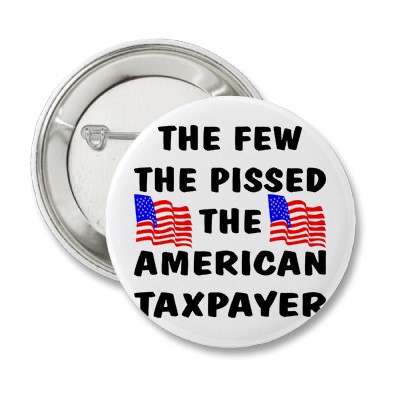
On the Lighter Side….

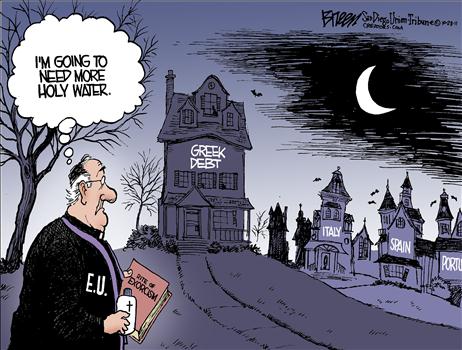
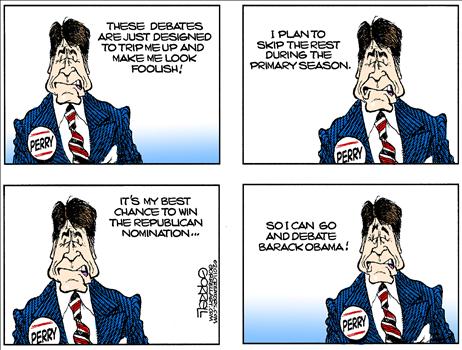
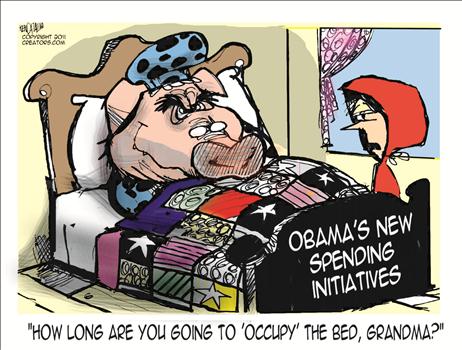

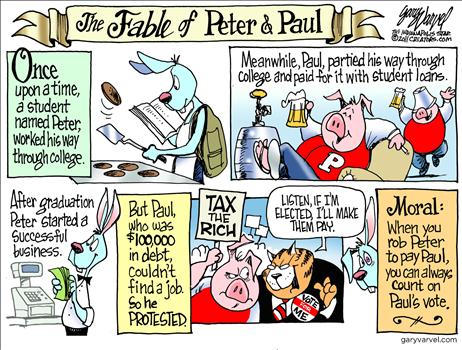


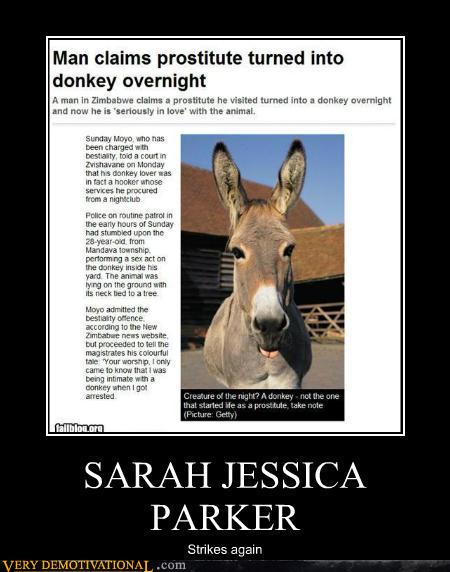
Then there’s this gem from blogger Rick Rice, courtesy of James Taranto, which, whether photo-shopped or not, pretty much sums up the OWS movement as we see it:

And in the “Business As Usual” segment, brought to us by Best of the Web, James Taranto details what has become Team Tick-Tock’s only real play:
Jay’s Lame Tu Quoque*
* Red herring; a very common fallacy in which Dimcrats or their MSM shills attempt to defend themselves or their Liberal masters from criticism by turning the critique back against the accuser.
Ricochet.com’s Diane Ellis accuses Jay Carney, the White House press secretary, of employing “mean girl” rhetoric, which seems to be synonymous with the tu quoque:
Responding to Paul Ryan’s criticisms that Obama has “opted for divisive rhetoric and the broken politics of the past,” Carney today told reporters that “I would simply remind Congressman Ryan that the Republican leader in the other body, the Senate, made clear in public statements that his number-one priority wasn’t to work with Democrats, wasn’t to work with the president, wasn’t to get things done in a way that the American people want them to get done, but to–his number-one priority, as he said explicitly, was to do everything he could to assure that President Obama was not reelected. It sounds like politics of division to me.”
Even as a tu quoque, this is lame. “Politics of division” refers to a means of campaigning. When a member of the party out of power makes the incumbent’s defeat a priority, that isn’t necessarily the politics of division. It’s just politics.
Finally, we’ll call it a day with the “ABB (‘Anybody But Barack’)” segment, and a presidential-wannabe whose candidacy we’d normally dismiss out of hand:
Pastor of ‘Koran-Burning’ Fame Announces 2012 Presidential Run
Then again, despite his shortcomings….which are beyond measure….he’s likely got a better plan for the economy than the Captain currently steering….
….our Ship of State!
Magoo














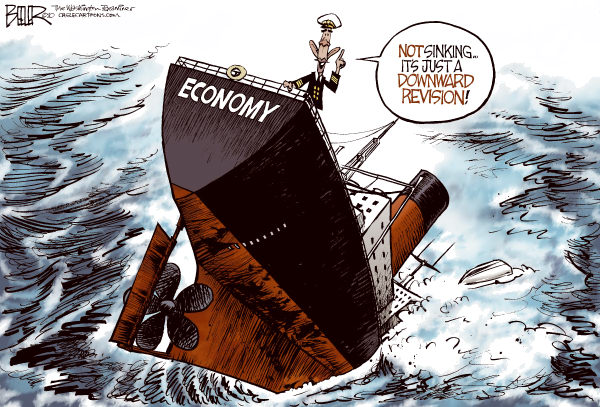

You must be logged in to post a comment.